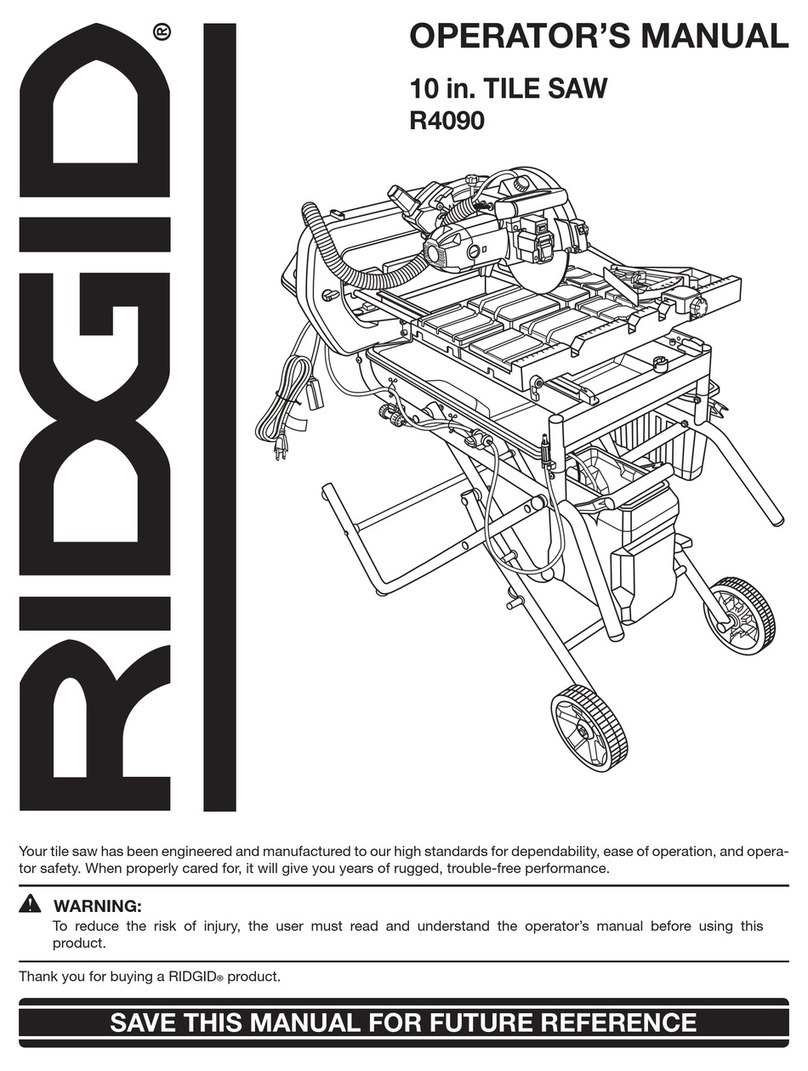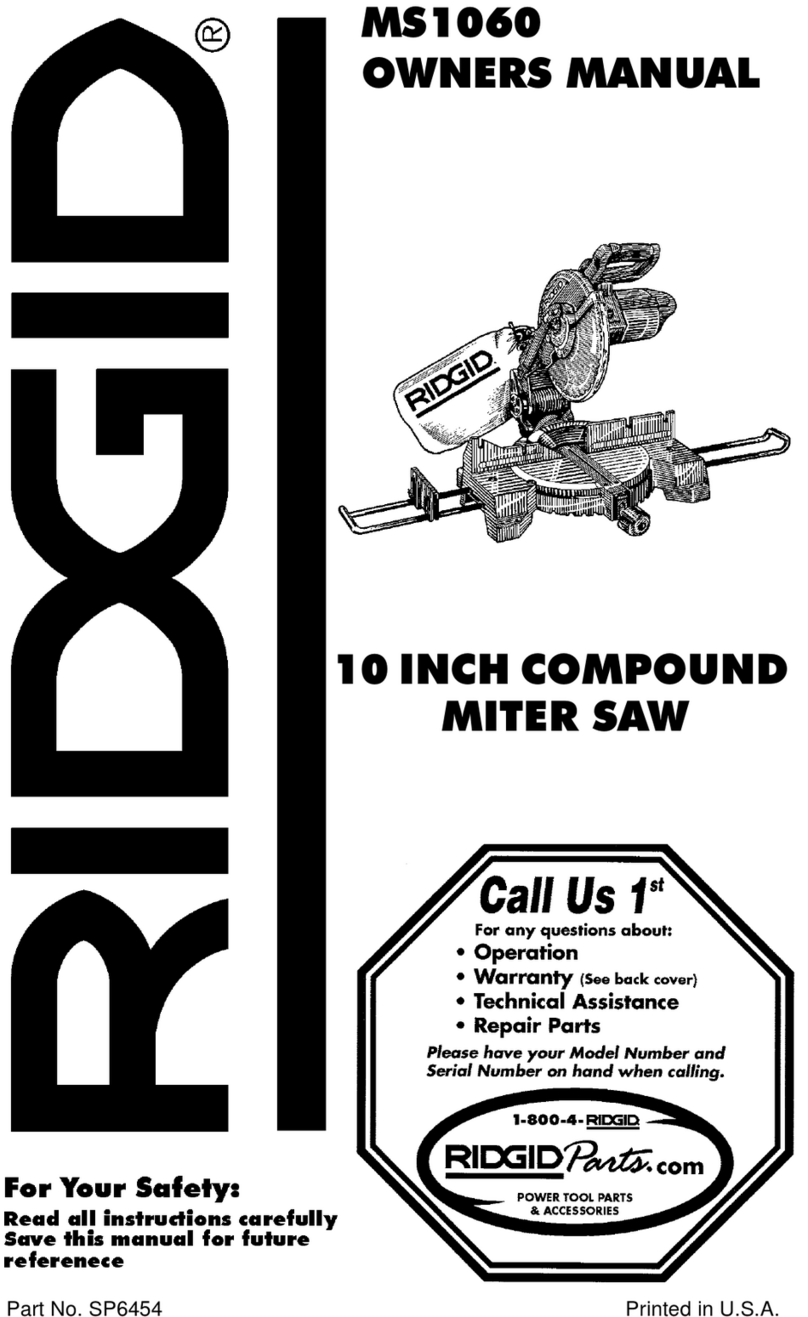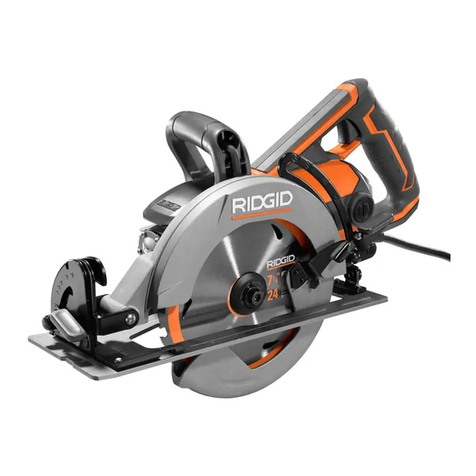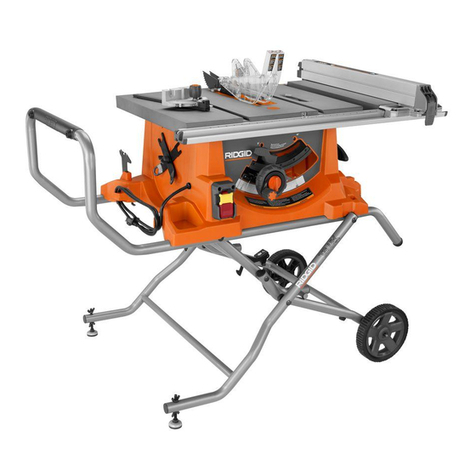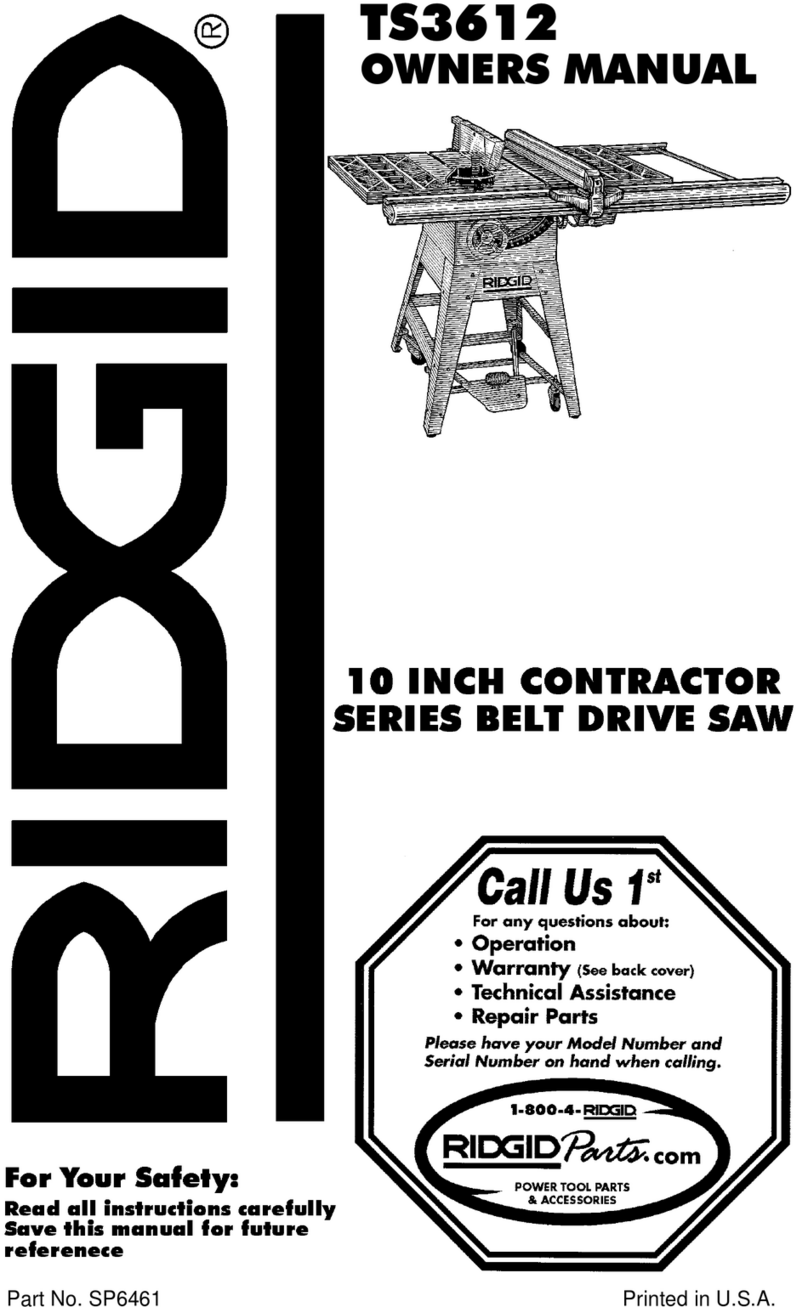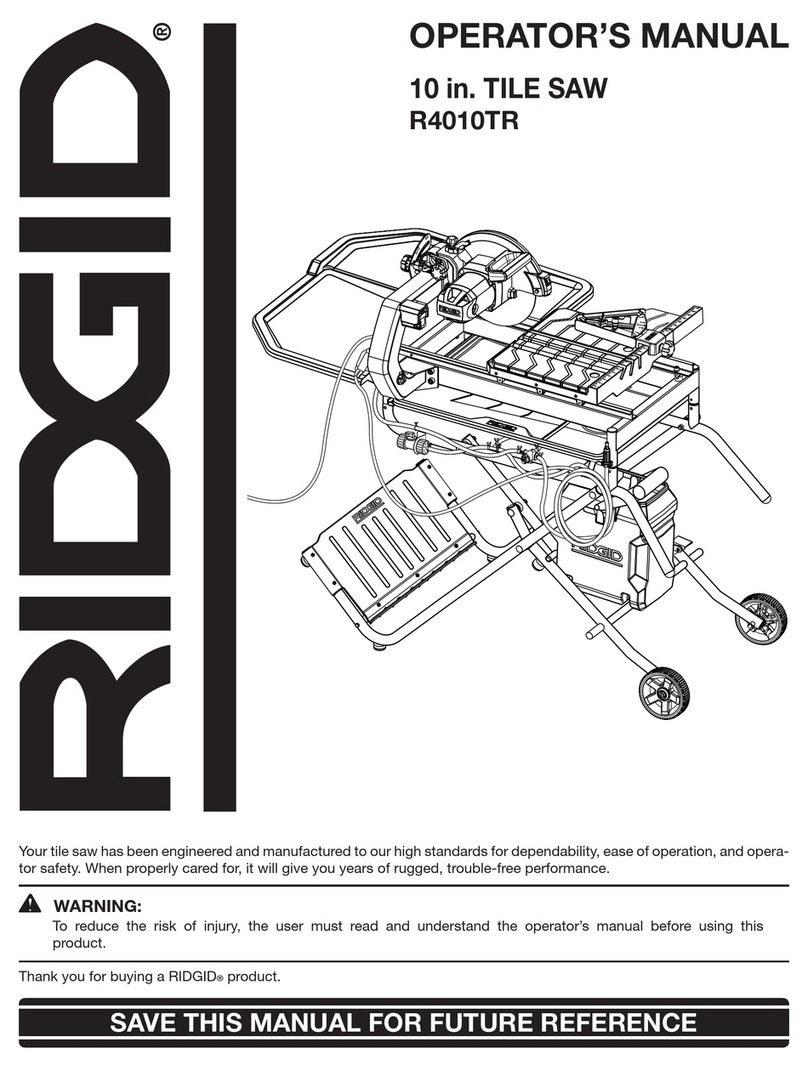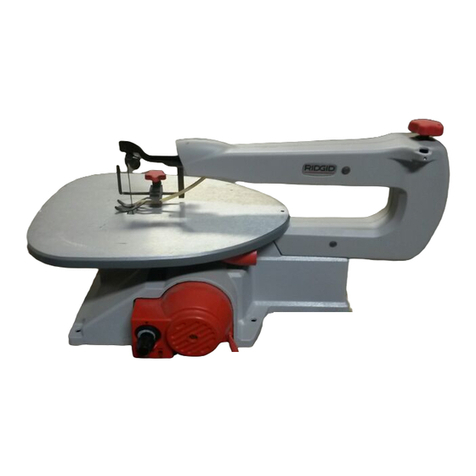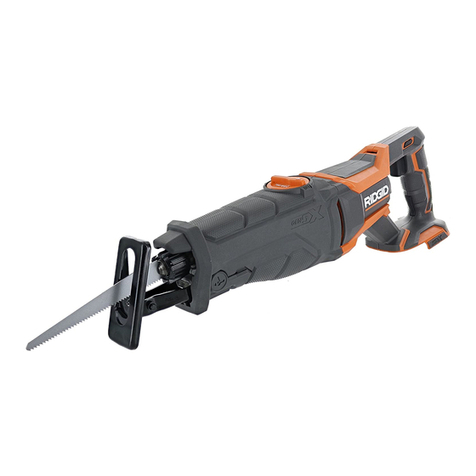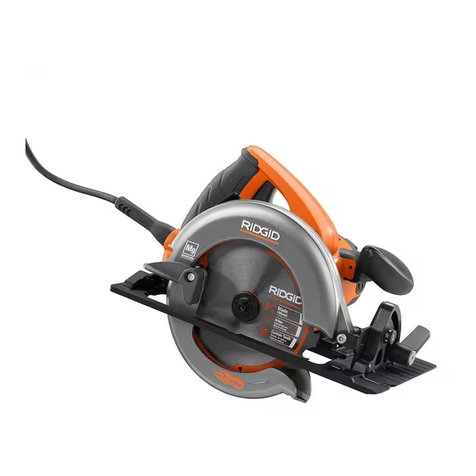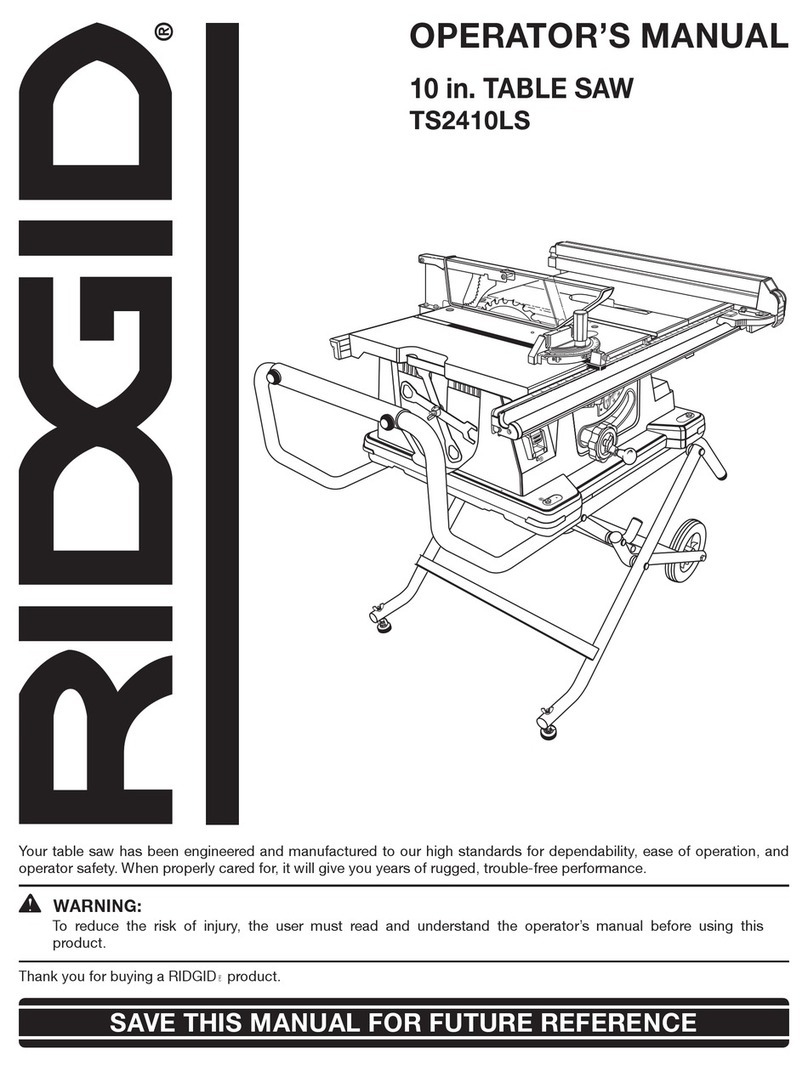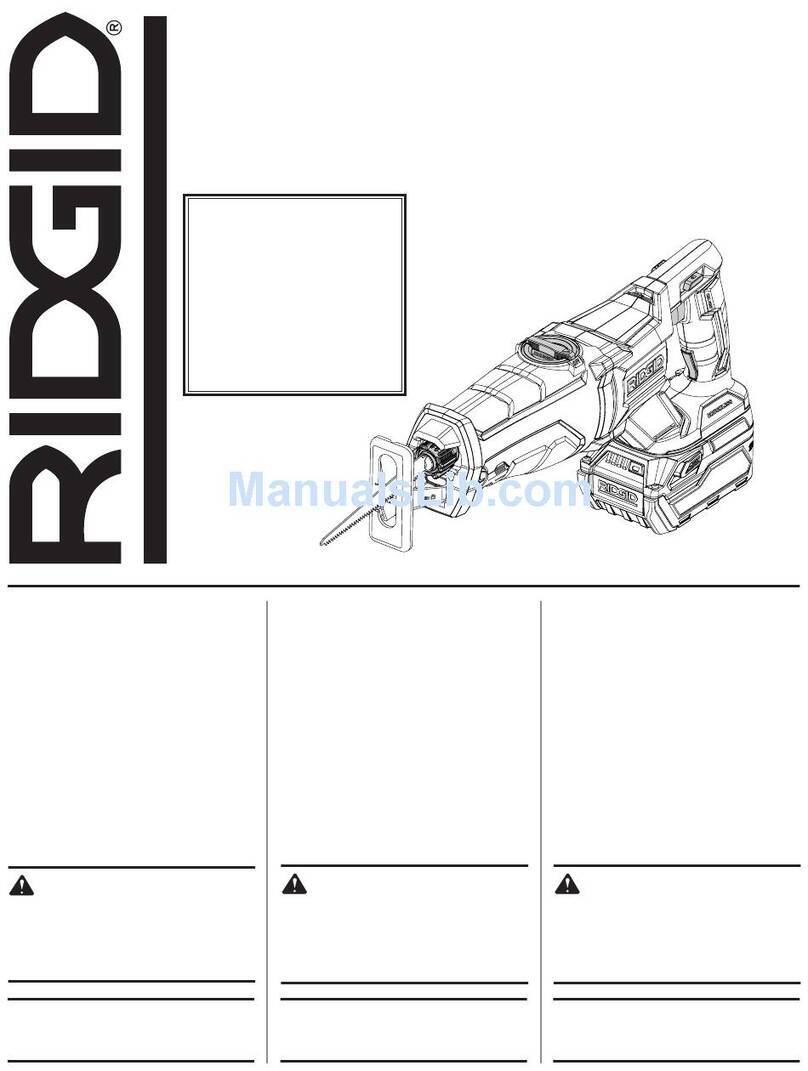
5 - English
TABLE SAW SAFETY RULES
Never use a damaged or cut push stick. A damaged
push stick may break causing your hand to slip into the
saw blade.
Do not perform any operation “freehand”. Always
use either the rip fence or the miter gauge to position
and guide the workpiece. “Freehand” means using
your hands to support or guide the workpiece, in lieu
of a rip fence or miter gauge. Freehand sawing leads to
misalignment, binding and kickback.
Never reach around or over a rotating saw blade.
Reaching for a workpiece may lead to accidental contact
with the moving saw blade.
Provideauxiliaryworkpiece support tothe rearand/or
sidesof the sawtable forlong and/or wideworkpieces
to keep them level. A long and/or wide workpiece has
a tendency to pivot on the table’s edge, causing loss of
control, saw blade binding and kickback.
Feed workpiece at an even pace. Do not bend or
twist the workpiece. If jamming occurs, turn the tool
off immediately, unplug the tool then clear the jam.
Jamming the saw blade by the workpiece can cause
kickback or stall the motor.
Donot removepieces ofcut-off materialwhile thesaw
is running. The material may become trapped between
the fence or inside the saw blade guard and the saw
blade pulling your fingers into the saw blade. Turn the saw
off and wait until the saw blade stops before removing
material.
Use an auxiliary fence in contact with the table top
when ripping workpieces less than 2 mm thick. A thin
workpiece may wedge under the rip fence and create a
kickback.
KICKBACK
Kickback is a sudden reaction of the workpiece due to a
pinched, jammed saw blade or misaligned line of cut in the
workpiece with respect to the saw blade or when a part of
the workpiece binds between the saw blade and the rip
fence or other fixed object.
Most frequently during kickback, the workpiece is lifted from
the table by the rear portion of the saw blade and is propelled
towards the operator.
Kickback is the result of saw misuse and/or incorrect
operating procedures or conditions and can be avoided by
taking proper precautions as given below.
Never stand directly in line with the saw blade. Always
position your body on the same side of the saw blade
as the fence. Kickback may propel the workpiece at high
velocity towards anyone standing in front and in line with
the saw blade.
Never reach over or in back of the saw blade to pull or
to support the workpiece. Accidental contact with the
saw blade may occur or kickback may drag your fingers
into the saw blade.
Never hold and press the workpiece that is being
cut off against the rotating saw blade. Pressing the
workpiece being cut off against the saw blade will create
a binding condition and kickback.
Align the fence to be parallel with the saw blade. A
misaligned fence will pinch the workpiece against the
saw blade and create kickback.
Usea featherboardtoguide the workpieceagainstthe
table and fence when making non-through cuts such
as rabbeting, dadoing orresawing cuts. Afeatherboard
helps to control the workpiece in the event of a kickback.
Use extra caution when making a cut into blind areas
of assembled workpieces. The protruding saw blade
may cut objects that can cause kickback.
Support large panels to minimize the risk of saw blade
pinching and kickback. Large panels tend to sag under
their own weight. Support(s) must be placed under all
portions of the panel overhanging the table top.
Use extra caution when cutting a workpiece that is
twisted, knotted, warped or does not have a straight
edge to guide it with a miter gauge or along the fence.
A warped, knotted, or twisted workpiece is unstable
and causes misalignment of the kerf with the saw blade,
binding and kickback.
Nevercut morethanone workpiece,stacked vertically
or horizontally. The saw blade could pick up one or more
pieces and cause kickback.
When restarting the saw with the saw blade in the
workpiece, centre the saw blade in the kerf so that
the saw teeth are not engaged in the material. If the
saw blade binds, it may lift up the workpiece and cause
kickback when the saw is restarted.
Keep saw blades clean, sharp, and with sufficient
set. Never use warped saw blades or saw blades with
cracked or broken teeth. Sharp and properly set saw
blades minimise binding, stalling and kickback.
TABLE SAW OPERATION
Turn off the table saw and disconnect the power
cord when removing the throat plate, changing the
saw blade or making adjustments to the riving knife,
anti-kickback pawls or blade guard, and when the
machine is left unattended. Precautionary measures
will avoid accidents.
Never leave the table saw running unattended. Turn it
off and don’t leave the tool until it comes to a complete
stop. An unattended running saw is an uncontrolled
hazard.
Locate the table saw in a well-lit and level area where
you can maintain good footing and balance. It should
be installed in an area that provides enough room to
easily handle the size of your workpiece. Cramped,
dark areas, and uneven slippery floors invite accidents.
